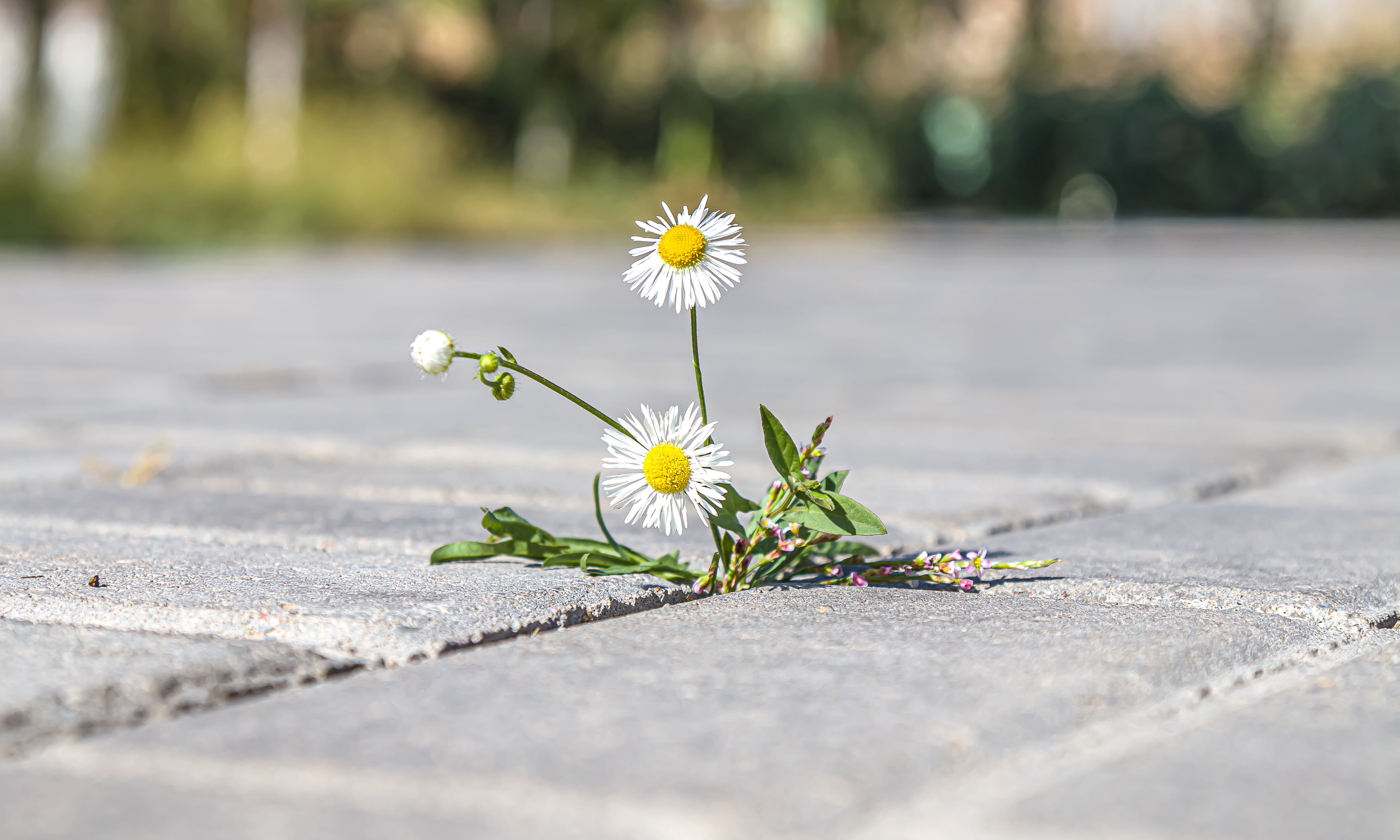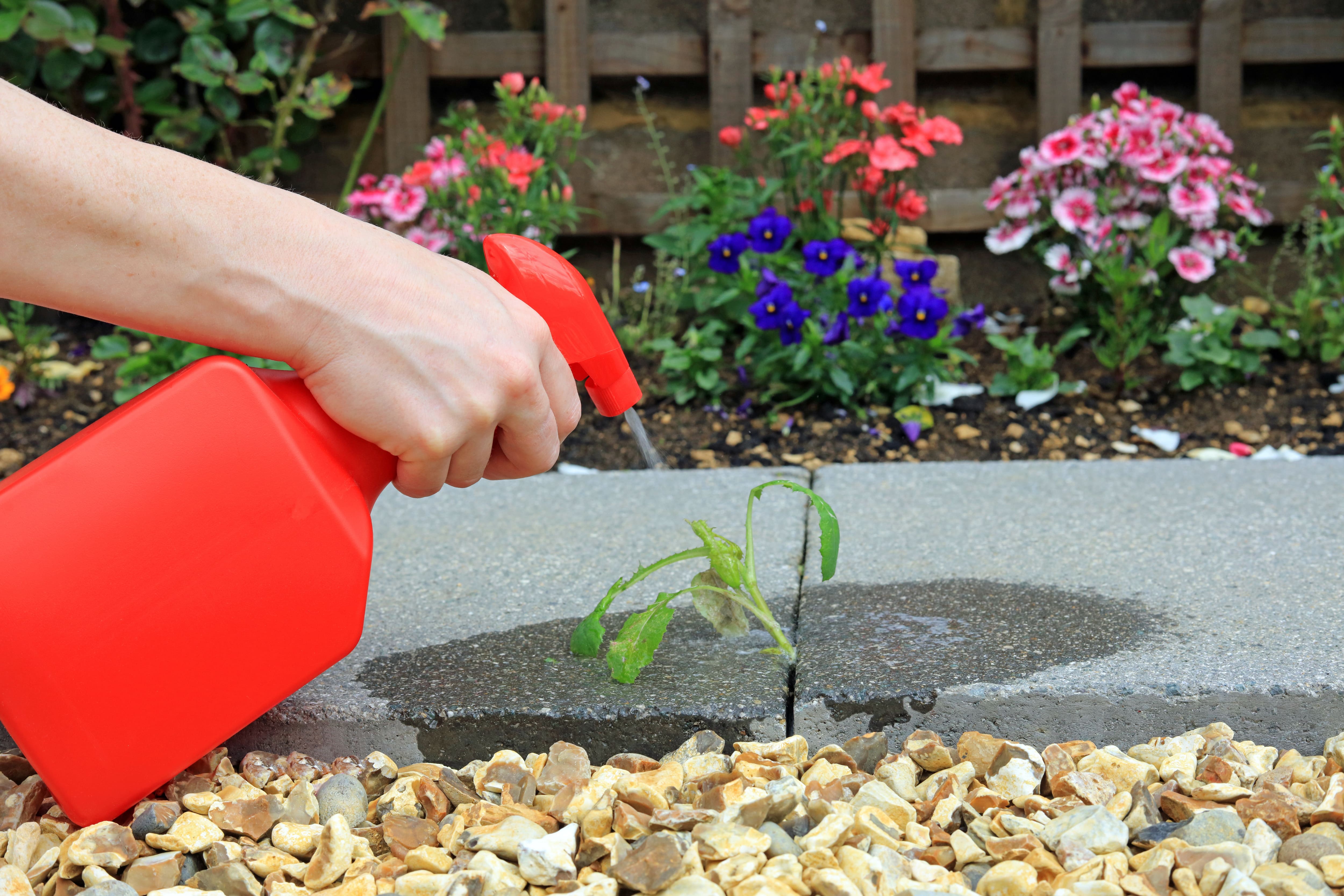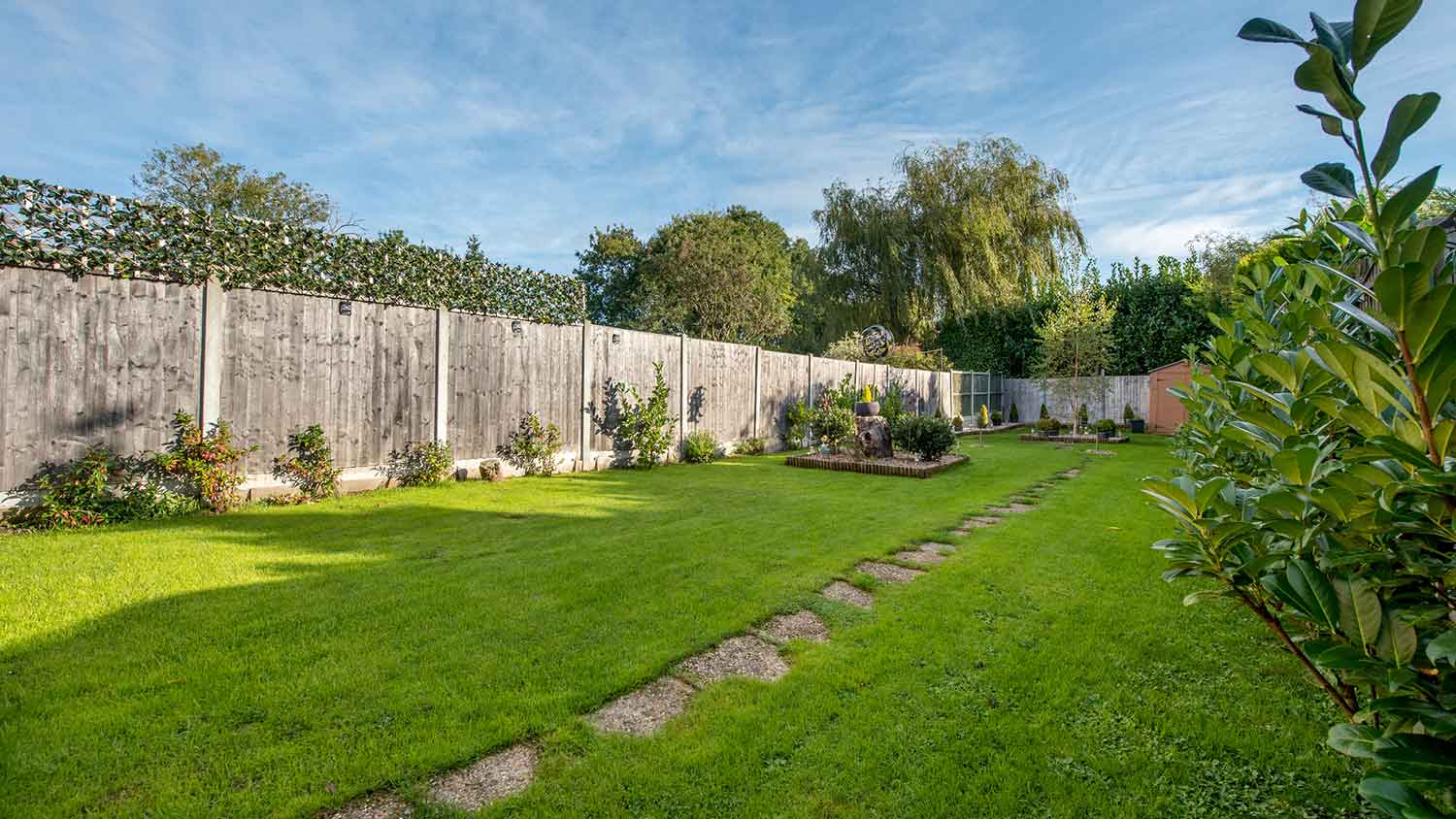How to Make Homemade Grass and Weed Killers
In the weeds? Here are some DIY ways to clear up your lawn


Unwanted grass and weeds turn our yards from a garden paradise to, well, something worse. But learning how to make homemade grass and weed killer is budget-friendly, easy on the lawn, and extremely effective.
Pulling out unwanted grass via manual weeding is a time-consuming and frustrating process, made even more difficult in the blaring hot sun. And using store-bought herbicides are decent options, but the former can be expensive and the latter introduces unwanted chemicals onto your property. Instead, follow our guide to making your own grass and weed killers.
Why Do I Have Weeds?

Weeds are any plant you don’t want growing in an undesired location. With that in mind, any unwanted grass is a weed. Why do they appear in your lawn? Weeds are opportunistic and grow whenever and wherever conditions are favorable. They enjoy the same conditions as the more beloved plants in your yard, such as decent moisture levels and moderate temperatures.
Many weed types germinate quickly, producing thousands of seeds each season which, in turn, leads to more and more weeds. They can also lay dormant in the soil for years before germinating, further confusing the process. In other words, the presence of weeds is not your fault, though you should prepare to spring into action to safely control the presence of unwanted weeds.
How Much Does it Cost to Remove Weeds?
Professional weed removal costs an average of $100 per visit but increases to $200 per visit for large and weed-infested lawns. Purchasing weed-killing chemicals like store-bought herbicides cost anywhere from $20 to $300, depending on the brand, container size, and formulation. However, these herbicides are typically filled with potentially dangerous chemicals.
How to Prepare for Weed Removal
Before you begin mixing potent weed-killing potions, some crucial preparation steps are worth considering. First of all, clean up your yard to the best of your ability. You don’t want errant leaves or an ancient lawn chair covering up a patch of weeds that demands attention. Next, take some time to scout out any undesired grass or weeds on your property, leaving no stone unturned.
Finally, consider the season and the weather. Ideally, you should wait until the growing season so the weeds are easier to spot and, if possible, choose a bright and clear day for the application process. This timing makes it easier to determine whether the homemade weed killer works.
How to Make and Use Homemade Weed Killers

You have several options when it comes to the wacky world of homemade weed and grass killers.
Use Vinegar and Dish Soap
Vinegar and dish soap are effective on their own, but together they become a weed-killing powerhouse. The mixture includes white vinegar, salt, and liquid dish soap, so prepare your ingredients.
Mix together 1 gallon of white vinegar, 1 cup of salt, and 1 tablespoon of dish soap.
Stir the mixture properly until fully combined.
Pour the solution into a spray bottle for easy use. This mixture stays potent for a while, so store it in the same container when finished.
Apply the solution directly onto the weeds during a sunny part of the day. The sun and heat help the chemicals complete their task.
Check on the weeds in a few hours to see if they are browning and, thus, dying. This formulation does not traverse the root system, so be prepared to make multiple passes.
Remember, this solution makes no distinction between weeds and your prized petunias, so spray carefully.
Use Rubbing Alcohol
Rubbing alcohol makes for a decent weed killer, adding yet another use-case scenario to this chemical’s impressive resume. It removes moisture from the foliage, causing any undesired grass to die.
Mix 1 quart of water with 2 tablespoons of rubbing alcohol.
Stir until fully combined.
Pour the solution into a spray bottle for easy application.
Like with the vinegar-based solution, apply on a sunny day and spray directly onto the weeds.
Exercise caution and work slowly to ensure you spray the compound onto weeds and not other plants.
Try Boiling Water
Boiling water is an effective weed killer, in addition to being your best bet when cooking pasta. This is a great option for clearing out standalone weeds in cracks in the pavement and other out-of-the-way locations.
Boil water, remove it from the stovetop, and take it outside.
Pour the water over the weeds.
Exercise caution when handling boiled water. Wear gloves, long pants, and close-toed shoes.
Finally, avoid accidentally pouring some of the scalding-hot liquid onto your favorite grasses. Boiled water kills indiscriminately.
Use Corn Gluten Meal
Corn gluten meal is the powder left over after corn is milled, and it makes for a mighty fine weed suppressor, stopping seeds from completing the germination process. This substance is highly effective but requires an ultra-precise application schedule and a bit of weather-based luck.
Time the application to coincide with the initial seed planting period. This period varies depending on the type of weed. The best time to try this method is anywhere from March to late May, but cross-reference this timeline with the types of weed on your property.
The best time to apply corn gluten meal is during a dry period. Ideally, you want two or three dry days after the initial application for the best results.
To apply, spread the powder over the soil where the seeds are located.
Water the corn gluten into the soil after applying.
Wait for the roots to die off.
Cover Up the Weeds
Weeds are plants and require plenty of sunlight and water to grow. You know what that means. You don’t necessarily need a chemical solution—just cover the weeds up.
Use a bit of mulch, which acts as a natural ground cover, or cardboard, newspaper, purpose-built lawn coverings, or swaths of fabric.
Mow your lawn on the shortest setting during the summer months, paying special attention to the weed-covered areas.
Cover the spot using your preferred method, letting the weeds roast under the hot sun. If using fabric or cardboard, anchor it down with bricks or other heavy objects.
It takes several weeks for this method to work, so exercise patience.
How to Prevent Weeds From Coming Back
You can’t prevent the wind from blowing weed seeds onto your property, but you can do some relatively simple things to dissuade unwanted grasses from crowding up your lawn.
Add ground-covering plants: Certain plants compete for space and resources with weeds, crowding them out. Consider planting creeping thyme, lavender, oregano, ajuga, creeping juniper, and similar plants to prevent weeds from taking root.
Pull out weeds manually: Many types of weeds germinate quickly, releasing thousands of seeds into the atmosphere. In other words, stay on top of your game by manually pulling out weeds whenever you find new growth.
Mow regularly: Mow your lawn regularly and keep the grass blades at around 3 inches in length. These tall grass blades shade the undersoil, which helps reduce weed growth.
Water properly: Hose sprinklers should run around 4 hours per zone once per week, resulting in 1 inch of water on the lawn every week. A properly watered lawn helps create a deep root system which, in turn, crowds out weeds.
Use the appropriate fertilizer: Make sure to fertilize your lawn regularly and use an appropriate type of fertilizer for the plants you are cultivating.
Try an aeration service: Contact a local lawn aeration service and give core aeration a shot. This process helps improve the root system, reducing the thatch layer and increasing air circulation in the process. This helps create an optimal environment for your desired plants and gives weeds a reduced infiltration window.
DIY vs. Hire a Pro
Hiring a local weed control service is a surefire way to complete the job quickly, efficiently, and correctly. If you are overwhelmed by the number of weeds on your property, this is a great option. However, hiring a pro costs $100 to $200 and the aforementioned DIY solutions only cost the price of the materials. Give one of these DIY options a shot and bring out the paid professionals if you can’t quite get a handle on things, as weeds are finicky.
Kristin Salaky contributed to this piece.
Frequently Asked Questions
The fastest way to kill unwanted grass and weeds is by using a commercial-grade herbicide, such as glyphosate. However, these herbicides introduce all kinds of icky chemicals into your lawn. If you want a quick-acting weed killer that is relatively safe to use, go with the vinegar, salt, and dish soap solution mentioned above. Boiled water also works quickly.
There are many options to eradicate weeds right down to the roots. Vinegar works, but it takes a week or so to do its thing, and the same goes for many commercially available herbicides. Boiled water is a quick way to kill off roots, or you can pull up weeds at the root.
Roundup is a budget-friendly and highly-effective commercially available herbicide. The active ingredient, glyphosate, is highly toxic to plants, which is good for weeds, but also toxic to animals, people, and nearly everything else. Plus, you likely don’t have access to industrial-grade glyphosate. Using a vinegar, salt, and dish soap solution mimics the effects without toxicity.





- How to Kill Weeds in Grass and Keep Them From Coming Back
- How to Permanently Get Rid of Weeds in Driveway
- Who Do I Hire to Pull Weeds?
- Pulling Weeds by Hand: A Complete Guide
- When Is the Best Time to Pull Weeds?
- How to Get Rid of Weeds in Rocks Simply and Safely
- Weed or Flower? Here’s What to Know About What’s Growing in Your Garden
- How to Kill Grass in Flower Beds: 8 Easy Methods to Try
- A Lawn Fertilizer Schedule to Follow for Best Results
- Spring Lawn Care: 15 Easy Steps to a Beautiful Yard










